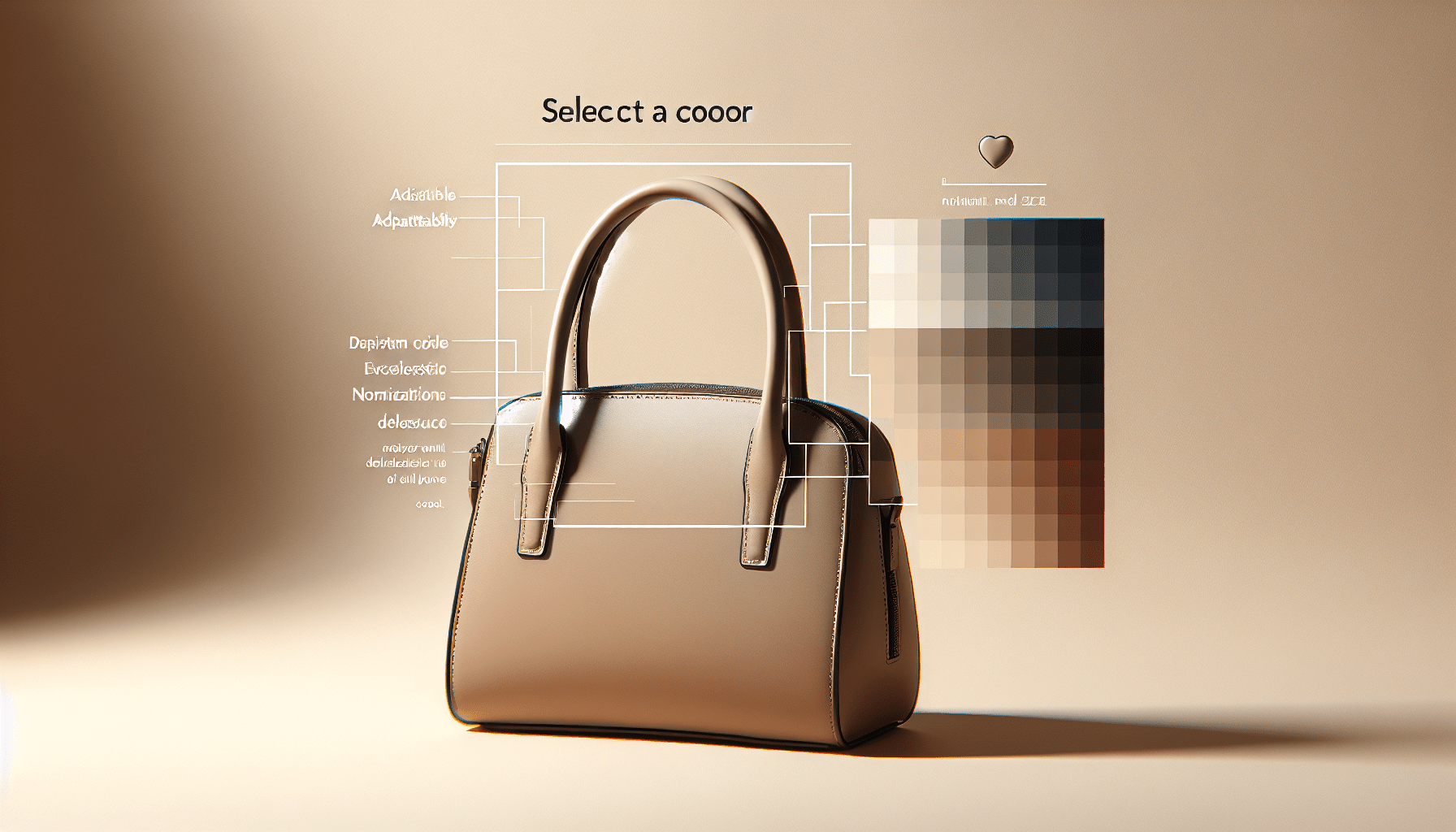What Material Is A Backpack Made Of
When it comes to choosing a backpack, have you ever wondered what materials are used to make it? The composition of a backpack plays a crucial role in its durability, weight, and overall functionality. From sturdy nylon to lightweight polyester, a wide range of materials are employed in the production of backpacks. Understanding the different materials used can help you make an informed decision when selecting the perfect backpack for your needs.
Overview
Backpacks are an essential item for people of all ages and lifestyles. Whether you’re a student, traveler, hiker, or professional, a backpack is a convenient and practical way to carry your belongings. But have you ever wondered what materials make up these trusty companions? In this article, we will explore the different materials commonly used in backpacks, their properties, and factors to consider when choosing the right material for your needs. We will also delve into advancements in backpack materials, specific uses for different materials, manufacturing processes, evaluating material quality, and sustainability and ethical considerations.
Common Backpack Materials
When it comes to choosing a backpack, you will find a wide range of materials available. Each material has its own unique characteristics that affect the backpack’s durability, water resistance, weight, breathability, flexibility, and more. Let’s take a closer look at some of the most common materials used in backpack production:
Nylon
Nylon is a popular choice due to its strength, durability, and lightweight nature. It is resistant to abrasions and tears, making it suitable for outdoor activities and travel backpacks. Additionally, it can be treated with a water-resistant coating, making it more suitable for use in various weather conditions.
Polyester
Polyester is another commonly used material in backpacks. It is durable, lightweight, and resistant to stretching and shrinking. Polyester is also known for its resistance to UV radiation, making it a good choice for backpacks used in sunny environments.
Canvas
Canvas is a heavy-duty material that offers excellent durability and strength. It is made from tightly woven cotton or linen fabric, providing resistance against tearing and abrasion. Canvas backpacks are often used for outdoor activities, as they can withstand rough conditions.
Leather
Leather backpacks are known for their timeless style and durability. Genuine leather is a luxurious and highly durable material, but it can be heavy and expensive. Faux leather or synthetic leather alternatives are also available, offering similar aesthetics at a lower price.
Vinyl
Vinyl is a synthetic material that is water-resistant, easy to clean, and affordable. It provides a wide range of color options, making it popular for fashion backpacks. However, vinyl may not offer the same durability as other materials.
Cordura
Cordura is a type of nylon fabric known for its exceptional strength and abrasion resistance. It is commonly used in heavy-duty backpacks designed for outdoor activities or military purposes. Cordura backpacks are built to withstand harsh conditions.
Ripstop
Ripstop fabric is made with a unique weaving technique that helps prevent tears from spreading. It is commonly used in backpacks that need to withstand rough use, such as hiking or camping backpacks. Ripstop fabrics are lightweight and durable.
Denim
Denim, the classic fabric used to make jeans, is also used in backpack production. Although not as common as other materials, denim offers a fashionable and casual look. It is relatively durable, but may not provide the same water resistance or lightweight properties as other options.
Neoprene
Neoprene is a synthetic rubber commonly used in the production of sports and hydration backpacks. It is lightweight, water-resistant, and provides good insulation. Neoprene backpacks are often used in water sports or outdoor activities that require protection from moisture.
Mesh
Mesh is a breathable material commonly used in backpacks to enhance ventilation and airflow. It is typically used in backpacks designed for sports, gym, or hiking activities, where breathability is essential. Mesh panels or pockets allow air to circulate, preventing a build-up of heat and sweat.
Properties of Backpack Materials
When selecting a backpack, it’s essential to consider the properties of the materials used. The right combination of properties ensures the backpack meets your specific needs. Let’s explore some key properties to consider:
Durability
Durability is crucial, especially if you’re planning to use your backpack for rugged outdoor activities or heavy daily use. Look for materials that are resistant to tears, abrasion, and general wear and tear. Materials like nylon, polyester, canvas, and Cordura are known for their durability.
Water Resistance
If you’ll be using your backpack in wet environments or during rainy seasons, water resistance is an important feature to consider. Some materials, like nylon, polyester, and vinyl, can be treated to enhance their water-resistant properties. However, it’s important to note that fully waterproof materials may be necessary for activities like water sports or hiking in heavy rainfall.
Weight
The weight of your backpack can significantly impact your comfort, especially if you’ll be carrying it for extended periods. Lightweight materials like nylon and polyester are often favored for their ability to reduce the overall weight of the backpack while maintaining durability.
Breathability
For activities that require physical exertion or in warm climates, breathability is essential to prevent sweat build-up and discomfort. Materials with breathable properties, such as mesh or backpacks with mesh panels, enhance airflow and ventilation.
Flexibility
The flexibility of a backpack material affects its ability to conform to your body, making it more comfortable to carry. Look for materials that offer a good balance between flexibility and durability. Nylon, polyester, and canvas are known to provide both flexibility and strength.
Abrasion Resistance
Abrasion resistance is crucial, especially for backpacks used in rough environments or activities that involve contact with rough surfaces. Materials like Cordura and ripstop fabrics are designed to withstand repeated friction without easily showing signs of wear and tear.
UV Resistance
If you’ll be spending a considerable amount of time in the sun, UV resistance is worth considering. UV radiation can cause materials to fade or degrade over time. Polyester is known for its UV resistance, making it suitable for outdoor activities in sunny environments.
Insulation
Insulation is an important property to consider if you’ll be carrying items that require temperature regulation, such as food or drinks. Certain materials, like neoprene, provide good insulation properties, helping to keep hot or cold items at the desired temperature for longer periods.
Maintenance
Consider the maintenance requirements of the material before making a purchase. Some materials, like vinyl or neoprene, are easy to wipe clean, while others like canvas or leather may require more specialized care. Choose a material that aligns with your maintenance preferences and lifestyle.
Cost
The cost of the backpack material is an important factor for many people. Materials like nylon, polyester, and canvas generally offer good value for the price, as they provide a combination of durability and affordability. On the other hand, genuine leather or high-performance materials like Cordura may come with a higher price tag.
Factors to Consider When Choosing a Backpack Material
When choosing a backpack material, several factors should be taken into consideration to ensure it meets your specific needs. Let’s explore some factors to consider:
Intended Use
Think about how you plan to use the backpack. Will it primarily be used for school, work, travel, hiking, or sports? Different activities have different requirements, and the material should align with the demands of your intended use.
Environment
Consider the environment in which the backpack will be used. Will it be exposed to extreme temperatures, moisture, sand, or rugged outdoor terrain? Each environment has unique challenges, and the material should be able to withstand those conditions.
Weight Requirements
Consider how much weight you will typically be carrying in your backpack. If you’ll be carrying heavy items, a lightweight material like nylon or polyester may be preferred to reduce overall weight. However, if you’ll be carrying fragile or valuable items, durability may be a higher priority.
Weather Conditions
Think about the weather conditions you’ll likely encounter with your backpack. Will you be using it in rainy, snowy, or sunny weather? Choosing a material with water resistance or UV resistance may be necessary to protect your belongings in adverse weather conditions.
Budget
Set a budget for your backpack purchase. Different materials have different price ranges, and it’s important to find a balance between cost and desired features. Consider the durability and longevity of the material to ensure it provides good value for the price.
Aesthetic Preferences
Consider your personal style and aesthetic preferences when choosing a backpack material. Some materials, like leather or denim, offer a classic and fashionable look, while others, like nylon or mesh, offer a more sporty or modern appearance. Choose a material that aligns with your personal taste.
Durability Expectations
Think about how long you expect your backpack to last. If you’re looking for a long-term investment, materials like Cordura or leather may provide superior durability. However, if you anticipate replacing your backpack more frequently, other materials may offer a better balance of durability and cost.
Cleaning and Maintenance
Consider the ease of cleaning and maintenance required for the material. Some materials, like vinyl or neoprene, can be quickly wiped clean, while others, like canvas or leather, may require more specialized care. Choose a material that aligns with your cleaning preferences and lifestyle.
Advancements in Backpack Materials
With advancements in technology and manufacturing, backpack materials have evolved over time to offer new and improved features. Let’s explore some of the advancements in backpack materials:
Smart Fabrics
Smart fabrics integrate technology into the material itself, allowing for features like built-in sensors, connectivity, or interactive components. These fabrics are still in the early stages of development, but they show promising potential for future backpack designs.
Antimicrobial Coatings
Antimicrobial coatings help prevent the growth of bacteria, fungus, and other microorganisms on the backpack material. This feature is especially useful for backpacks used in sports or outdoor activities where sweat and moisture are common. Antimicrobial coatings help maintain cleanliness and prevent odors.
Waterproof Technologies
Technological advancements have led to the development of waterproof materials that go beyond water resistance. Innovative coatings or laminates provide enhanced protection against heavy rain, snow, or water sports activities. These materials ensure your belongings stay dry even in the most challenging weather conditions.
Eco-friendly Materials
As environmental awareness increases, so does the demand for eco-friendly backpack materials. Manufacturers are exploring sustainable alternatives, such as recycled polyester, organic cotton, or natural fibers. These materials aim to reduce the environmental impact of backpack production by using renewable resources and minimizing waste.
Integrated Solar Panels
For those on the go, backpacks with integrated solar panels offer the ability to charge electronic devices using solar energy. These panels are typically lightweight and flexible, making them a convenient and sustainable option for outdoor enthusiasts or travelers.
Shock-absorbing Materials
Some backpacks now incorporate shock-absorbing materials or technologies to protect fragile items, such as laptops or cameras. These materials act as a cushion, absorbing impact and reducing the risk of damage. This feature is particularly beneficial for individuals who carry delicate or valuable equipment.
Puncture-resistant Fabrics
Certain backpack materials now offer puncture resistance properties, making them suitable for activities that involve sharp objects or rough terrains. This feature ensures the backpack can withstand accidental punctures and maintains its integrity during outdoor or adventure activities.
Specific Uses of Different Backpack Materials
Different materials excel in specific uses due to their unique properties. Let’s explore some common uses of different backpack materials:
Travel Backpacks
Travel backpacks often prioritize durability and water resistance due to the challenging environments they may encounter. Materials like nylon, polyester, or Cordura are commonly used to provide the necessary strength and protection against the elements.
Hiking Backpacks
Hiking backpacks require materials that can withstand rugged terrains and adverse weather conditions. Ripstop fabrics, Cordura, or durable polyester blends are often used to ensure the backpack can handle heavy loads and rough usage.
School Backpacks
School backpacks are often subjected to heavy daily use and carry a variety of items like books, laptops, or school supplies. Durable materials like nylon, canvas, or polyester ensure the backpack can withstand the demands of a school environment.
Work Backpacks
Work backpacks need to strike a balance between professionalism, durability, and functionality. Materials like leather, nylon, or polyester provide a blend of style and durability, ensuring the backpack can withstand the daily commute and carry work essentials.
Casual Backpacks
Casual backpacks prioritize style and comfort. Materials like canvas, denim, or faux leather are commonly used in casual backpacks to achieve a fashionable and relaxed look.
Sports Backpacks
Sports backpacks require materials with excellent breathability, flexibility, and moisture resistance. Mesh, nylon, or neoprene are often preferred to provide proper ventilation and protection against sweat and moisture.
Tactical Backpacks
Tactical backpacks used in military or law enforcement require materials with exceptional durability, water resistance, and abrasion resistance. High-performance materials like Cordura or ripstop fabrics are commonly used to withstand the rigors of tactical operations.
Fashion Backpacks
Fashion backpacks focus on style and aesthetics. Faux leather, vinyl, or unique fabric patterns are often used to create trendy and eye-catching designs.
Hydration Backpacks
Hydration backpacks are designed specifically for carrying water reservoirs and maintaining hydration during sports or outdoor activities. Neoprene or water-resistant materials are commonly used to prevent leakage and keep water at a consistent temperature.
Camera Backpacks
Camera backpacks require materials that provide excellent padding and protection for delicate camera equipment. Shock-absorbing materials, reinforced stitching, and modular compartments are often incorporated to safely carry cameras, lenses, and accessories.
Manufacturing Processes for Backpack Materials
The process of manufacturing backpack materials involves various techniques to create the desired properties and aesthetics. Let’s explore some common manufacturing processes:
Weaving and Knitting
Weaving and knitting involve interlacing threads or yarns to create a fabric. Different patterns and techniques can be used to achieve specific characteristics, such as strength, flexibility, or breathability. This process is commonly used for materials like nylon, polyester, or canvas.
Coating and Laminating
Coating and laminating involve applying a layer of coating or laminate to the surface of the fabric to enhance properties like water resistance, UV resistance, or durability. This process is often used for materials like nylon, polyester, or vinyl.
Dyeing and Printing
Dyeing and printing involve adding color or patterns to the fabric. Dyeing is the process of coloring the fabric itself, while printing involves applying a design or pattern onto the fabric’s surface. This process is commonly used to achieve desired aesthetics in materials like nylon, polyester, or canvas.
Bonding and Stitching
Bonding and stitching involve joining different parts of the fabric together to create the final backpack. Bonding techniques, such as heat sealing or adhesives, are used to create strong and seamless bonds between fabric layers. Stitching involves sewing the fabric together using various stitches to ensure durability and strength.
Molding and Extruding
Molding and extruding involve shaping materials through heat and pressure. Some backpack components, such as buckles, zippers, or plastic reinforcements, are created through molding or extrusion processes. These techniques ensure the necessary strength and functionality of these components.
Quilting and Piping
Quilting involves stitching multiple layers of fabric together with padding in between to create a quilted pattern. This process adds cushioning and aesthetic appeal to backpacks. Piping involves attaching a narrow tube of fabric along the seams or edges of the backpack to provide reinforcement and enhance the overall structure.
Embroidery and Appliqué
Embroidery involves decorating the fabric with thread or yarn to create patterns or designs. Appliqué involves attaching cut-out fabric pieces onto the fabric’s surface to add decorative elements. Both techniques are often used to enhance the aesthetics of backpacks made from materials like canvas or denim.
Dye Sublimation
Dye sublimation is a printing technique that uses heat to transfer dye onto the fabric. This process allows for vibrant and detailed designs to be applied to the material, resulting in durable and fade-resistant prints. Dye sublimation is commonly used in materials like polyester.
Screen Printing
Screen printing involves applying ink onto the fabric through a mesh screen with a stencil. This process allows for precise and high-quality prints, often used for logos or designs on backpacks. Screen printing is commonly used in materials like nylon, polyester, or canvas.
Foam Molding
Foam molding involves the shaping of foam materials to provide cushioning or structure in specific areas of the backpack. Foam padding or inserts are often used to protect sensitive items or enhance comfort. Foam molding ensures that the backpack provides proper protection and support.
Evaluating Backpack Material Quality
Ensuring the quality of backpack materials is essential to guarantee durability, functionality, and user satisfaction. Various testing methods are employed to evaluate the quality of materials. Let’s explore some common tests:
Strength Testing
Strength testing involves subjecting the material to mechanical stress to assess its resistance against tearing, breaking, or stretching. This test helps determine the material’s ability to withstand heavy loads or rough use.
Water Resistance Testing
Water resistance testing evaluates how well the material repels water. The material is exposed to water or spray, and its ability to resist water penetration is assessed. This test is crucial to determine how well the backpack will protect your belongings in wet environments.
Abrasion Testing
Abrasion testing simulates the wear and tear that a material may experience during regular usage. The material is subjected to repeated rubbing or scraping against rough surfaces, and its resistance to abrasion is evaluated. This test helps assess the material’s durability and longevity.
Tear Resistance Testing
Tear resistance testing evaluates the material’s ability to resist tearing when subjected to force or sharp objects. The material is subjected to a controlled tear force, and its resistance to tearing is measured. This test helps determine the material’s strength and ability to withstand rough usage.
Seam Strength Testing
Seam strength testing assesses the strength of seams and stitches used to join different parts of the backpack. The seams are subjected to force or tension, and their ability to withstand the stress is evaluated. This test ensures the seams provide adequate strength and durability.
UV Resistance Testing
UV resistance testing determines how well the material withstands UV radiation without fading or degrading over time. The material is exposed to UV light, and any changes in color or integrity are observed. This test is crucial to ensure the material’s longevity, especially for outdoor backpacks.
Colorfastness Testing
Colorfastness testing evaluates the material’s ability to retain its color when exposed to various conditions, such as washing, light, or friction. The material is subjected to these conditions, and any color bleeding, fading, or transfer is assessed. This test ensures the backpack maintains its aesthetic appeal after regular use.
Flammability Testing
Flammability testing assesses the material’s resistance to ignition and flame spread. The material is exposed to a flame or high heat, and its reaction to the flame is observed. This test is crucial to ensure the material’s safety during everyday use.
Chemical Resistance Testing
Chemical resistance testing evaluates the material’s resistance to various solvents, oils, or cleaning agents. The material is exposed to these substances, and any changes in appearance, structure, or performance are assessed. This test helps determine how the material responds to potential chemical exposure.
Puncture Resistance Testing
Puncture resistance testing assesses the material’s ability to withstand punctures from sharp objects. The material is subjected to controlled impacts or pressure from sharp probes, and its resistance to punctures is evaluated. This test ensures the backpack can withstand accidental punctures during use.
Sustainability and Ethical Considerations
In recent years, sustainability and ethical considerations have become increasingly important in the manufacturing of backpack materials. Let’s explore some key aspects to consider:
Recyclability
Recyclability refers to the ability of materials to be processed and reused to create new products. Using backpack materials that are recyclable or made from recycled materials helps reduce waste and minimize the environmental impact.
Renewable Resources
Choosing materials made from renewable resources, such as organic cotton or bamboo, helps protect natural resources and reduce dependence on non-renewable materials. These materials are derived from sources that can be replenished over time.
Eco-friendly Manufacturing Practices
Selecting backpack materials from manufacturers that prioritize eco-friendly manufacturing practices contributes to sustainable production. These practices may include reducing resource consumption, minimizing waste generation, or implementing energy-efficient technologies.
Fair Labor Standards
Consider manufacturers committed to fair labor standards and ethical working conditions. Ensure that the materials used in your backpack are ethically sourced and produced without exploiting workers or violating international labor standards.
Chemical Usage and Disposal
Choose materials that minimize the use of harmful chemicals during production. Look for certifications or standards that ensure the materials are safe for human health and the environment. Proper disposal methods should also be considered to minimize the impact on the ecosystem.
Upcycling and Repurposing
Materials that incorporate upcycled or repurposed components help reduce waste and give a second life to discarded materials. Look for backpack options that incorporate recycled elements, such as zippers or fabrics, to promote a circular economy.
Carbon Footprint
Consider the carbon footprint associated with the production and transportation of the backpack materials. Choosing locally sourced or produced materials helps reduce transportation emissions. Additionally, some manufacturers offset their carbon emissions or use renewable energy sources to reduce their environmental impact.
Certifications
Look for certifications or labels that ensure the sustainability and ethical practices of the backpack materials. Certifications such as Bluesign, Fair Trade, or Global Organic Textile Standard (GOTS) provide assurance that the materials meet specific environmental and social criteria.
Conclusion
Choosing the right material for your backpack is crucial to ensure it meets your specific needs, withstands daily wear and tear, and aligns with your values. Consider factors such as durability, water resistance, weight, breathability, and flexibility when making your decision. Evaluate the specific uses of different materials to find one that suits your intended activities. Be aware of advancements in backpack materials, such as smart fabrics or eco-friendly alternatives, as they offer new and improved features. Understand the manufacturing processes and tests used to evaluate material quality, ensuring you invest in a backpack that will last. Finally, consider sustainability and ethical considerations to contribute to a more responsible and conscious choice. With the wide variety of backpack materials available today, you can find the perfect one that fits both your practical needs and personal style. Choose wisely, and your backpack will be your trusted companion for years to come.




